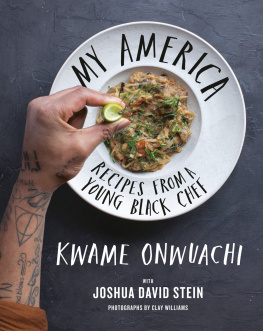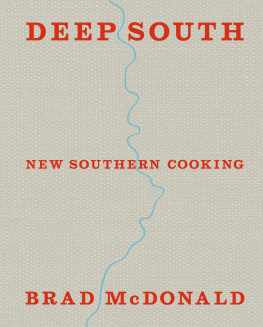Table of Contents
Landmarks



ABOUT THE AUTHOR

In four decades of travel around South America researching travel guides, Ben Box has enjoyed the flavours of the region at roadside shacks, market comedores, indigenous kitchens, Welsh tea rooms and modern restaurants. Every experience, from receptions with government ministers to lunch in community projects for displaced children, has fostered his deep appreciation of what South America has to offer the visitor. The restrictions of travel imposed by the Covid-19 pandemic gave all travellers time to reflect on what it is that makes visiting other countries so special. For Ben, food is integral to so many memorable occasions, and to share its character and variety through cooking and writing is the perfect opportunity to rekindle the joy of travel, to combine the stories that have arisen on the road with the stories behind the food and drink of this inspirational part of the world.
ACKNOWLEDGEMENTS
I am a professional guidebook writer but only an amateur cook and I have received a lot of help in compiling this collection of recipes.
Sarah Cameron, who has been my travelling companion for longer than we care to remember, cooked or advised on the cooking of the majority of the recipes and cast her editorial eye over some of the text.
UK-based Swedish writer and traveller Anna Maria Hellberg Moberg ( amhellbergmoberg.co.uk) cooked most of the Uruguayan recipes and some of the Colombian and Argentine dishes. She also contributed some stories to the book.
amhellbergmoberg.co.uk) cooked most of the Uruguayan recipes and some of the Colombian and Argentine dishes. She also contributed some stories to the book.
Carolyn Humphries ( carolynhumphries.co.uk) is a food writer, editor and audio describer. Her advice at the start of the project set me off on the right foot and I am most grateful to her for allowing me to draw on her expertise on many occasions.
carolynhumphries.co.uk) is a food writer, editor and audio describer. Her advice at the start of the project set me off on the right foot and I am most grateful to her for allowing me to draw on her expertise on many occasions.
Fbio Sombra (writer, artist, musician and tour guide, Rio de Janeiro), contributed the feature on cachaa and caipirinha ().
My warmest thanks go to Katie Mackenzie for cooking pastel de choclo and to Jenny Box for cooking empanadas de horno. Both of them, and Katies family, provided lots of tasting notes and encouragement throughout the project. Other people who gave help, suggestions, ingredients and ideas in the UK were Marion Morrison, Sophie Paine and Lynda Saint. Rowland and Surinder Warboys, Nick and Frances Beasley and Clare Free and her family were willing tasters of soups and breads.
For their assistance in recommending local chefs, my warmest thanks go to Nicols Kugler in Argentina; Fabiola Mitru and Mariana Snchez Mitru in Bolivia; Csar Augusto Angel Valencia in Colombia; Claire Antell and Tony Thorne (whom I also thank for their ideas for the Guianas chapter); and Cecilia Kamiche in Peru.
And to the chefs themselves, a huge thank you for their enthusiasm and support: Federico Fialayre (Buenos Aires), Juan Pablo Reyes (La Paz), Edward Seisun Manterola (Chile), Alvaro Reinoso Carvalho (Quito thanks to Jascivan Carvalho, too), Eon John (Georgetown many thanks to Jessica Hatfield, as well), Juana Zunini (Lambayeque) and Laura Rosano (Chacra Ibira Pit).
Finally, this project would have been a lot harder to undertake without the existence of Raja Stores, Ipswich.
FEEDBACK REQUEST
At Bradt Guides were aware that books start to go out of date on the day theyre published and that you, our readers, are out there in the field doing research of your own. So why not tell us about your experiences? Contact us on  01753 893444 or
01753 893444 or  . Alternatively, you can add a review of the book to Amazon, or share your cooking photos with us on Facebook, Twitter or Instagram (@BradtGuides).
. Alternatively, you can add a review of the book to Amazon, or share your cooking photos with us on Facebook, Twitter or Instagram (@BradtGuides).
CONTENTS
INTRODUCTION
In 1981 I was working as a subeditor and proofreader on the South American Handbook (published at that time by Trade and Travel Publications, which later went on to become Footprint Travel Guides). In those days, the Handbook was not very effusive in its restaurant descriptions and, as a true disciple of the brand, nor was I. This is the report of my very first lunch in South America, on Tuesday 1 September 1981, Cartagena, Colombia: Ate lunch at the Nautilus fish restaurant (fabulous menu, with photos of the submarine and the crewmens signatures). Good food (814 pesos for two of us). The Handbook said: Nauticus [sic], in the old wall of the city, facing the statue of La India Catalina, excellent seafood, good value.
Three days later Sarah Cameron and I were based in Medelln. On a guided tour of nearby tourist sites, we stopped for lunch at the Parador Tequendamita, near La Ceja, by a small, picturesque waterfallWe had typical antioquea food, which was very dry (beans, minced meat, rice, patacn, arepa, chicharrn) and pudding we were very touristic and left all the mazamorra (maize in milk) a bit more detail than on Nautilus, but neither very enthusiastic nor kind to tourists. Afterwards we continued to Rionegro, which has outskirts of sumptuous fincas de recreo (country estates) and workers clubs. The town is growing and will grow even more when a new Medelln airport is completed nearby.

Colombia is known for its vast array of excellent fruits SS
Fast forward to 9 November 2018, to the most recent meal that I had in South America, also in Colombia, at the Ro Claro Reserva Natural between Medelln and Bogot. My report was as clipped as ever: Food in the restaurant is good; open kitchen for all to see whats being cooked.
After lunch, the group of birdwatchers I was with loaded our gear into a bus and headed back to the now fully functional Rionegro airport for a flight to Bogot. A landslide after torrential rain had to be cleared from the road, causing a last, frantic dash to catch the plane.
Rionegro, at the time of writing, marks almost full circle in my South American travels. Those brief descriptions in no way represent an entire careers worth of eating in South America. Whether one lovingly records every detail of every dish, or concisely records the what, where and how much, I, like every traveller, know that food is a hugely important part of ones journey.
FOOD AND TOURISM
For travellers, food serves a number of purposes: at its most simple level it sustains you on the road, from breakfast before setting out on a long day, to the produce bought in the local market for a meal in the hostel kitchen; from a bag of mandarins and a packet of Oreos for the bus journey to a fine dinner in a fashionable restaurant.
Food is the uniting factor between vendor and buyer in the panadera, between people eating together, between cook and diner. It is the stuff of celebration, from exuberant cakes in the pastry shop window to an
















 amhellbergmoberg.co.uk) cooked most of the Uruguayan recipes and some of the Colombian and Argentine dishes. She also contributed some stories to the book.
amhellbergmoberg.co.uk) cooked most of the Uruguayan recipes and some of the Colombian and Argentine dishes. She also contributed some stories to the book. 01753 893444 or
01753 893444 or  . Alternatively, you can add a review of the book to Amazon, or share your cooking photos with us on Facebook, Twitter or Instagram (@BradtGuides).
. Alternatively, you can add a review of the book to Amazon, or share your cooking photos with us on Facebook, Twitter or Instagram (@BradtGuides).